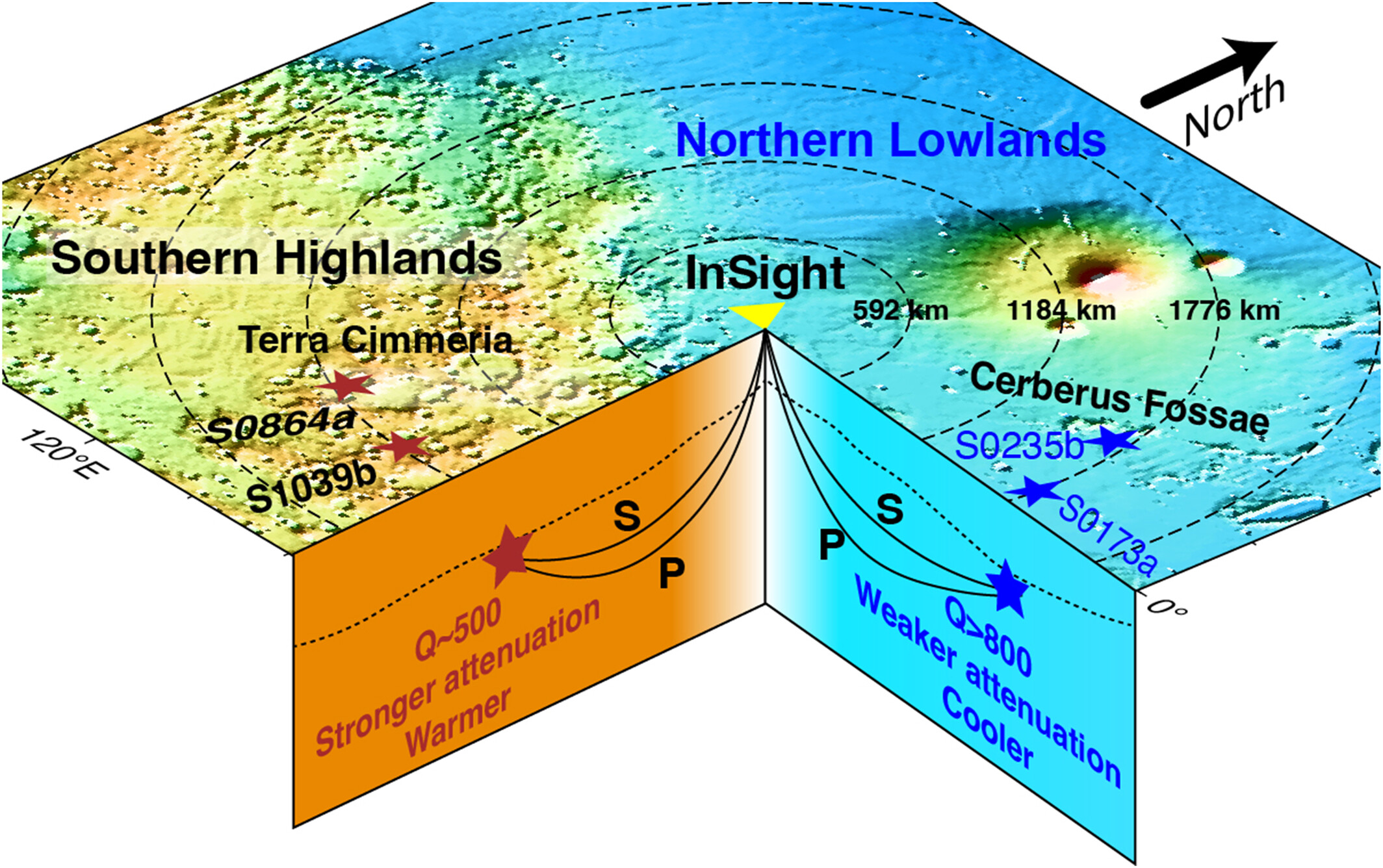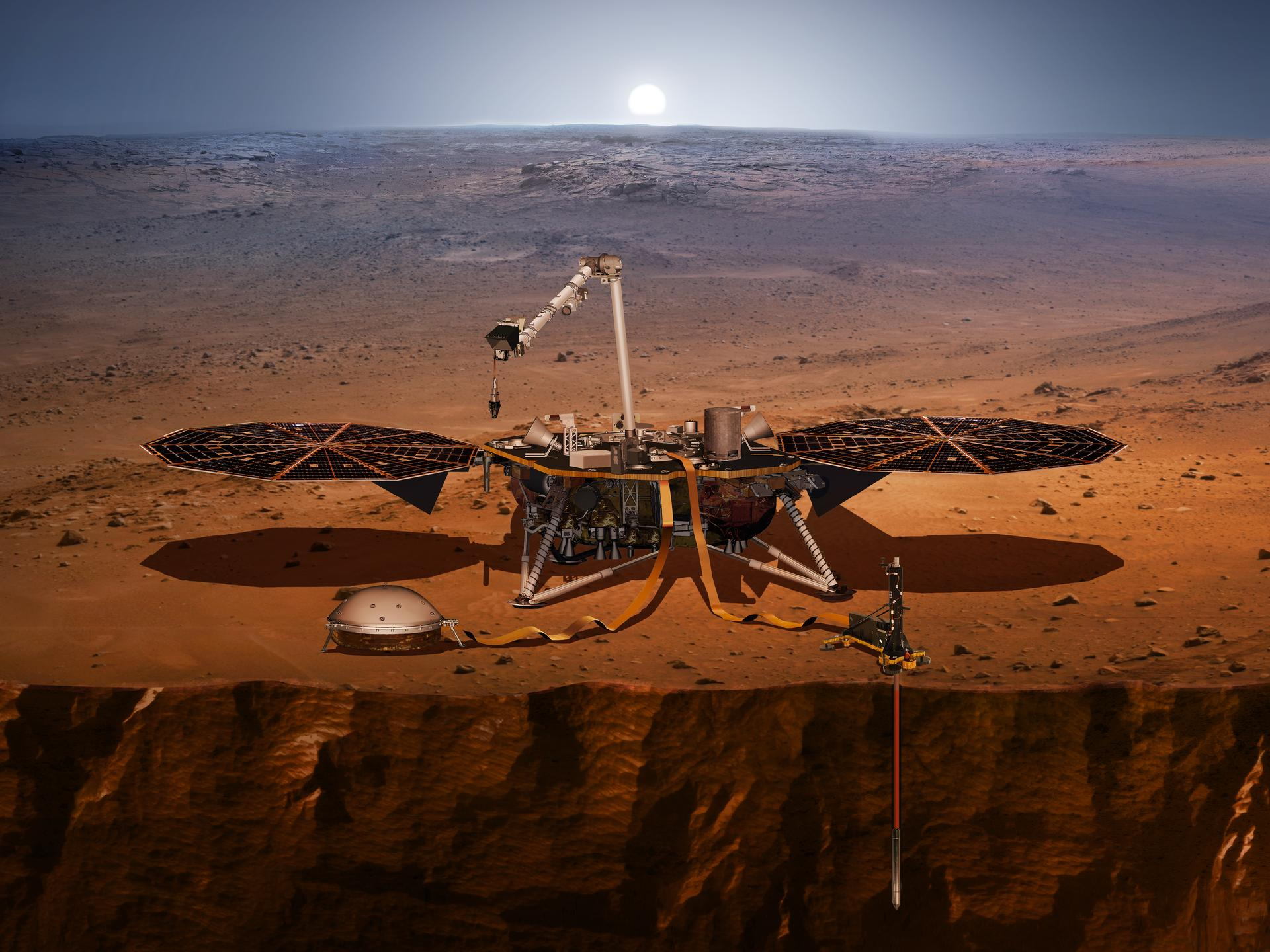The contrast between two clusters of marsquakes has led two scientists to suspect the internal structure of the Red Planet is quite different between the northern and southern hemispheres. If so, this would be crucial, possibly decisive, evidence in the long-running debate as to why the Martian southern hemisphere is far higher than the north.
ADVERTISEMENT GO AD FREE
Mars is a planet of two very different hemispheres, with one 5-6 kilometers (3-4 miles) higher than the other. According to Professor Hrvoje Tkalčić of the Australian National University, almost two-thirds of Mars is highlands, covering almost all the southern hemisphere, and some equatorial areas of the north. No other planet or large moon in the Solar System has such a sharp hemispheric difference. The cause has been debated since the difference was discovered; with discussion intensified by the discovery the thickness of the crust is even more different – 30 kilometers (18 miles) thicker in the South.
One theory proposes an internal cause, the other sees the Martian northern hemisphere as either a giant impact basin carved out by an enormous asteroid strike or the product of several impacts near each other. The fact the crustal magnetic field is very different between the two hemispheres might seem a major clue, but has failed to settle the matter, but Tkalčić hopes marsquakes might.
NASA’s InSight mission collected data on marsquakes and demonstrated that, although some marsquakes are caused by meteorite strikes, others prove the planet is still geologically active. Just days ago, analysis of these quakes was used to make the case that Mars has a solid core.
On Earth, we locate the source of quakes using a comparison of the arrival time of two seismic waves at three or more seismic stations and triangulate. This isn’t possible with a single seismometer on Mars, but the source of some quakes has been established in Cerberus Fossae in the Northern Lowlands. Professor Weijia Sun of the Chinese Academy of Sciences and Tkalčić applied a variety of methods to identify a second cluster as coming from Terra Cimmeria in the Southern Highlands. The data for the Terra Cimmeria cluster was poorer, but still good enough for comparisons with those from the north.
Sun and Tkalčić conclude that there is a major difference between the attenuation quality factor (Q) – which measures how the seismic waves from these quakes are affected by the planet’s internal structure – of the two clusters. They estimate a Q value of 481-543 for quakes coming from Terra Cimmera in the south. By contrast, the main quake cluster, from Cerberus Fossae in the north, has Q values of 800-2,000, suggesting far less attenuation and therefore passage through very different internal conditions.
The most likely cause, the pair propose, is differences in the temperature of material the seismic waves passed through, with the mantle beneath the highlands being hotter.

The two sources of earthquakes were similar distances from InSight, but differences in temperature within Mars meant the seismic waves traveled much more easily from the north.
A difference like this could not be the product of some ancient asteroid, Sun and Tkalčić argue. Instead, what we see at the surface reflects convection flows within Mars having transferred heat to the southern side.

InSight’s location in Elysium Planitia was chosen for ease of landing and solar energy, but it turned out to be the perfect site.
Image Credit: NASA/JPL-Caltech
Tkalčić told IFLScience that as a seismologist, rather than an expert in geodynamics, he does not know why this convection occurred and has not since evened out. However, he pointed to previous modeling that showed such a difference could be maintained as a result of hotter mantle material rising.
As to why no comparable object in the Solar System shows a similar pattern, Tkalčić told IFLScience: “If I knew that, it wouldn’t be one of the greatest mysteries of the Solar System.”
To confirm this conclusion, let alone explain the processes, we may need many more seismic detectors. “On Earth, we have thousands of seismic stations scattered around the planet. But on Mars, we have a single station, so the challenge is determining the location of these marsquakes when you have only a single instrument,” Tkalčić said in an emailed statement.
ADVERTISEMENT GO AD FREE
InSight landed just 4.5 degrees north of the Martian equator, but well within the Northern Lowland at Elysium Planitia. The location was chosen for the additional sunlight near the equator to power the lander’s solar panels, and ease of landing. However, Tkalčić told IFLScience: “The choice was very fortunate, roughly the same distance between the sites of the two clusters.” This made comparisons much easier.
Tkalčić told IFLScience the reason for the cluster of quakes is still unknown. “The cause is not well understood for any marsquakes other than meteorite impacts,” Tkalčić said. “We still don’t know if they are volcanic [in origin].”
Successful Martian landers and rovers have overwhelmingly been concentrated in the lowlands. It’s easier to land there, with more of the thin Martian atmosphere to slow a parachute, and the hemisphere is considered a better candidate for finding signs of life from the time when water flowed down to the lowlands. Seismic exploration may require venturing into the highlands.
The study is open access in Geophysical Research Letters.
Source Link: Marsquakes May Resolve One Of The Solar System’s Most Enduring Mysteries